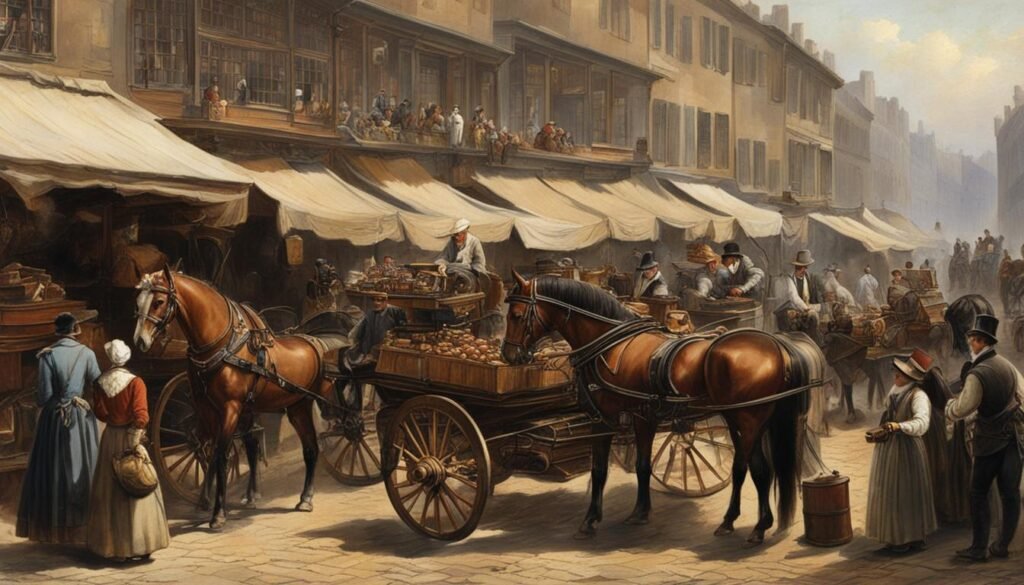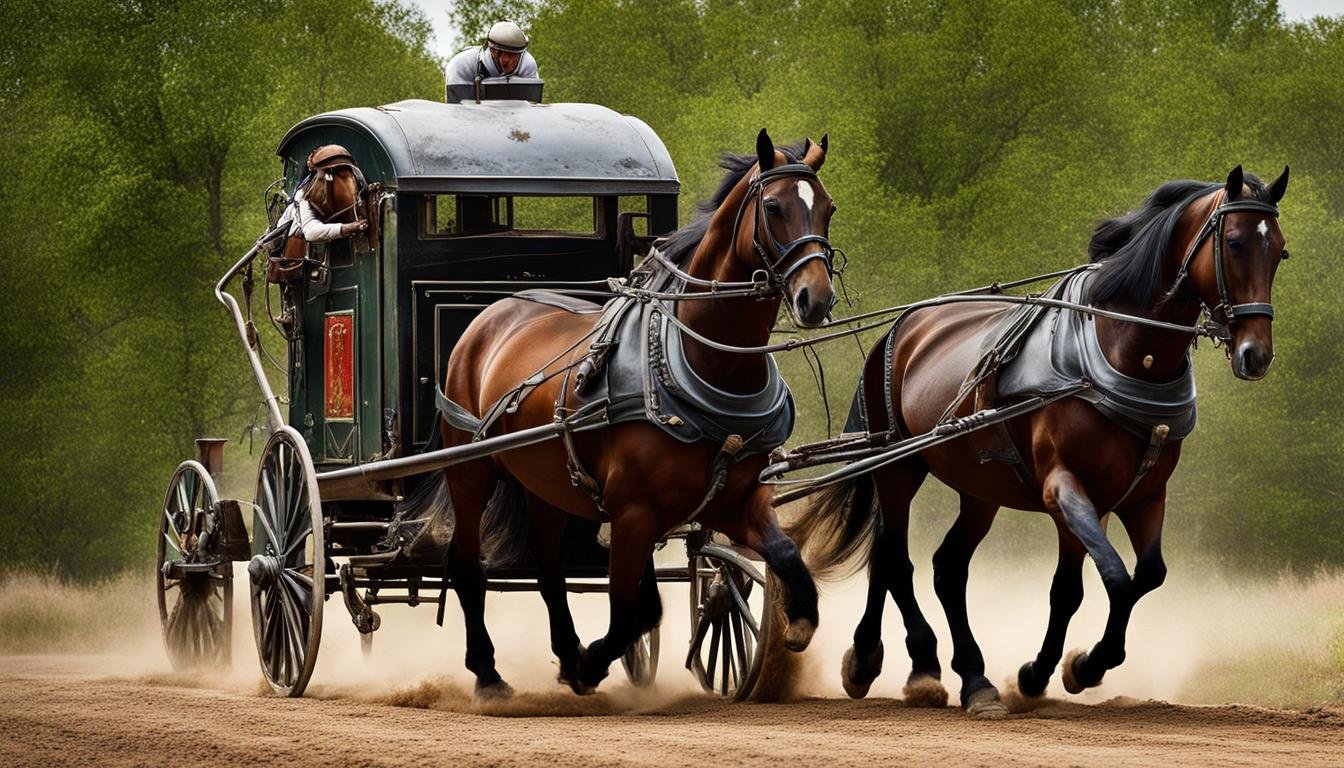As I delve into the fascinating history of vintage cleaning equipment, one cannot help but be intrigued by the horse-drawn vacuum cleaners that were once a common sight on the streets. These unique devices, with their charming red and gold fire engine aesthetic, played a significant role in revolutionizing cleaning practices in the early 20th century.
Engineer Hubert Cecil Booth is credited with pioneering the concept of vacuum cleaners as we know them today. In 1901, Booth unveiled his groundbreaking invention—a horse-drawn machine that utilized suction power to effectively remove dirt and dust from carpets and furniture. Prior to this innovation, cleaning equipment simply blew air, offering limited effectiveness.
The sight of the horse-drawn vacuum cleaner arriving at homes, with long hoses fed through windows, must have been a marvel to behold. These vintage cleaning tools were not only functional but also a symbol of progress. They represented a shift towards more efficient cleaning practices and sparked the gradual reduction in size and cost of vacuum cleaners, making them accessible to households.
Today, vintage vacuum cleaners serve as captivating artifacts that give us a glimpse into the evolution of cleaning technology. They stand as a testament to the determination and ingenuity of inventors like Booth who forever changed the way we keep our homes clean.
Key Takeaways:
- Horse-drawn vacuum cleaners revolutionized cleaning practices in the early 20th century.
- Engineer Hubert Cecil Booth played a pivotal role in developing the concept of vacuum cleaners based on suction.
- Vintage vacuum cleaners offer a fascinating glimpse into the evolution of cleaning technology.
- The invention of horse-drawn vacuum cleaners paved the way for more accessible and efficient cleaning equipment.
- Vintage cleaning tools like these remind us of the progress made in household cleaning practices.
The Rise of Electric Vacuum Cleaners and Household Adoption
While horse-drawn vacuum cleaners had their heyday in the early 20th century, the introduction of electric technology paved the way for a new era of household cleaning. In 1908, William Henry Hoover introduced the first electric vacuum cleaner, which quickly gained popularity due to its efficiency and ease of use. This marked a significant shift in the cleaning industry, as households began to adopt electric appliances and move away from traditional cleaning methods. Horse-drawn vacuum cleaners became obsolete as smaller, motor-powered models like those from Hoover and Electrolux took center stage. Today, vintage horse-drawn vacuum cleaners are sought after by collectors and enthusiasts, with some available for sale.

Advantages of Electric Vacuum Cleaners
- Efficiency: Electric vacuum cleaners offered improved cleaning power and suction capabilities compared to their horse-drawn counterparts. They could effectively remove dirt, dust, and debris from carpets, upholstery, and floors.
- Convenience: With the introduction of electric vacuum cleaners, cleaning became easier and less time-consuming. The compact design and portability of these machines allowed users to maneuver them effortlessly around their homes.
- Versatility: Electric vacuum cleaners were designed to handle various surfaces and materials. They featured adjustable settings and attachments that enabled users to clean different types of flooring, furniture, and drapes.
- Accessibility: As electric vacuum cleaners became more widely available and affordable, households from all walks of life could invest in this modern cleaning technology.
“The advent of electric vacuum cleaners revolutionized the way we clean our homes. These efficient appliances brought convenience and effectiveness to the forefront, making cleaning a more manageable task for households.” – Cleaning Expert
Collecting Vintage Vacuum Cleaners
Despite the prevalence of electric vacuum cleaners today, there is still a fascination with vintage cleaning equipment. Collectors and enthusiasts seek out horse-drawn vacuum cleaners as prized possessions that showcase the history and evolution of cleaning technology. Some vintage models are even available for sale, allowing individuals to own a piece of cleaning history.
| Brand | Model | Year | Condition | Price |
|---|---|---|---|---|
| Booth & Company | Fire Engine Vacuum Cleaner | 1901 | Good | $1,500 |
| Eureka | Horse-Drawn Suction Cleaner | 1910 | Excellent | $2,000 |
| Panasonic | Vintage Handheld Vacuum | 1955 | Used | $500 |
Collecting vintage vacuum cleaners offers a unique insight into the design, materials, and engineering of old-fashioned cleaning equipment. These nostalgic pieces serve as a reminder of how far we have come in terms of cleaning technology.
The Future of Vacuum Cleaners: From Robotics to Smart Appliances
As technology continues to advance, the future of vacuum cleaners holds exciting possibilities. Smart appliances and robotic vacuum cleaners have already made their way into the market, offering convenience and automation to homeowners. These innovative cleaning devices utilize artificial intelligence and sensors to navigate and clean homes without human intervention.
While the core principles of vacuum cleaning remain the same, the increasing integration of technology in residential cleaning devices points toward a future where cleaning becomes even more efficient and effortless. With historic vacuum cleaners and horse-drawn cleaning machinery as a starting point, we have witnessed a rapid evolution that has transformed cleaning practices over the years.
However, despite the advancements in cleaning technology, the household chore gap and expectations of cleanliness continue to persist. Women often shoulder a greater burden when it comes to maintaining a clean home. The future of vacuum cleaners and household cleaning practices, driven by cutting-edge technology, holds the promise of bridging this gap and making cleaning more equitable and accessible for all.
FAQ
When were horse-drawn vacuum cleaners invented?
Horse-drawn vacuum cleaners were invented in the early 20th century by engineer Hubert Cecil Booth.
How did horse-drawn vacuum cleaners work?
Horse-drawn vacuum cleaners used suction to remove dirt and dust, unlike previous models that blew air.
What did horse-drawn vacuum cleaners look like?
Horse-drawn vacuum cleaners had a distinctive red and gold fire engine aesthetic.
What led to the decline of horse-drawn vacuum cleaners?
The introduction of electric vacuum cleaners in 1908 led to the decline of horse-drawn models.
Are vintage horse-drawn vacuum cleaners still in demand?
Yes, vintage horse-drawn vacuum cleaners are sought after by collectors and enthusiasts.
What replaced horse-drawn vacuum cleaners?
Electric vacuum cleaners, such as those from Hoover and Electrolux, replaced horse-drawn models.
What advancements are there in modern vacuum cleaners?
Modern vacuum cleaners include smart appliances and robotic cleaners that utilize artificial intelligence and sensors for automation.
Are vacuum cleaners becoming more efficient?
Yes, advancements in technology are making vacuum cleaners more efficient and effortless to use.
What is the future of vacuum cleaners?
The future of vacuum cleaners holds exciting possibilities, with the integration of robotics and smart technology shaping the industry.
Who typically shoulders the burden of household cleaning?
Women often shoulder a greater burden when it comes to household cleaning.





Leave a Reply